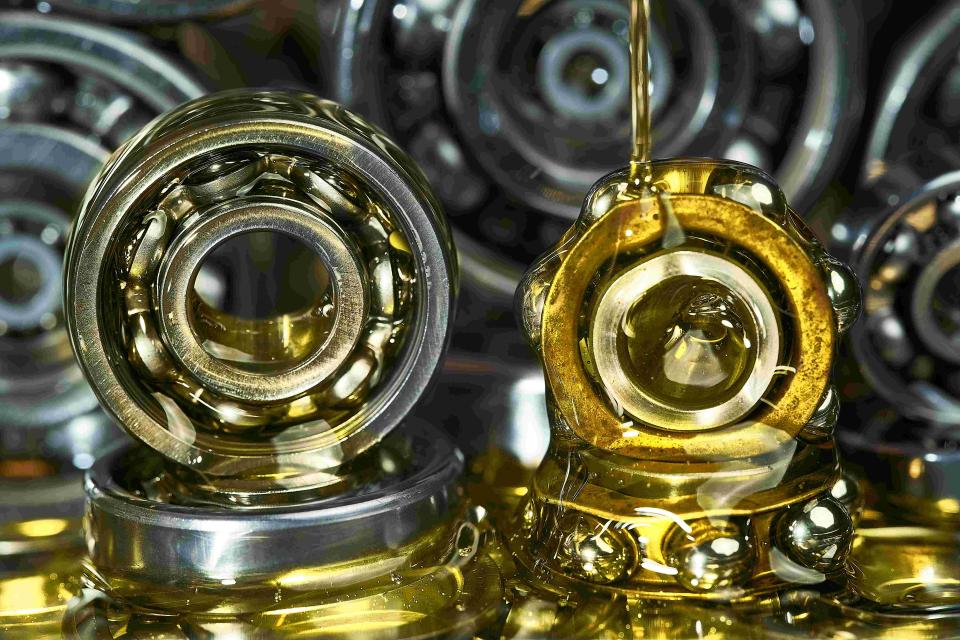According to Siemens report The true cost of downtime, the annual cost of an idle production line at a major automotive facility has surged to $695 million — one and a half times higher than five years ago. In heavy industry, downtime now costs $59 million annually, a 1.6-fold increase since 2019. While bearing failures are relatively rare, improper lubrication remains a key contributor. Choosing between grease and oil isn't straightforward — it depends on factors such as speed, load, temperature, orientation, and contamination. Here, Chris Johnson, managing director of bearing specialist SMB Bearings, explores the advantages and limitations of each lubrication method.
These rising costs underscore just how critical it is to prevent avoidable equipment failures — but how often do production managers consider the critical role of industrial bearings in ensuring equipment longevity?
When applying industrial bearings, few choices are as important as the choice between grease and oil lubrication. Grease and oil share the same fundamental purpose, and each play an essential role in reducing friction, minimising wear and extending bearing life. That said, the conditions in which they operate best are very different.
Put simply, making the wrong bearing lubrication choice can lead to overheating, premature failure or unplanned downtime. In order to avoid these consequences, let’s look at how production managers can choose the best lubricant — and avoid the cost of equipment downtime.
Where grease excels
Grease has a thicker consistency than oil. It is usually a base oil suspended in a soap-like thickener, which helps it stay in place more easily — especially in vertically mounted or hard-to-reach locations.
These characteristics make grease ideal for applications like electric motors, conveyor systems or food processing equipment where protection from washdown or particles is essential. Grease also acts as a sealant, helping to keep out dirt, moisture and other contaminants.
It is typically easier to apply and less prone to leakage, which makes it a cost-effective solution for sealed or shielded bearings that aren’t regularly maintained. Grease is often the preferred choice in applications that require simplicity, longer service intervals or operate in environments where lubricant retention would otherwise be a challenge.
However, grease also has its limitations. It doesn’t dissipate heat as efficiently as oil and can break down faster in high-speed or high-temperature environments. In such cases, excessive heat can cause the thickener to degrade, which reduces lubrication effectiveness and potentially damages the bearing.
When oil is the better fit
Oil is often favoured in very high-speed or low torque applications where better cooling and continuous circulation are needed. Unlike grease, oil can be pumped, filtered and monitored as part of a closed lubrication system — which allows contaminants to be removed and fresh lubricant to be supplied continuously.
Typical examples include gearboxes, machine tools and high-speed spindles. In these cases, the superior heat transfer properties of oil reduce the risk of thermal damage and prolong bearing life. Oil also provides lower friction in many situations, making it well-suited to precision applications that demand tight tolerances and consistent performance.
That said, oil systems are more complex and require careful design. They need pumps, reservoirs, filtration units and regular monitoring. Some applications require a continuous oil mist or oil spray — all of which add to maintenance requirements and cost. They’re also less effective in vertical or exposed environments where leakage or oil migration can become problematic.
Key factors in the decision
Several operating parameters should guide the decision between grease and oil lubrication, each with a direct impact on bearing performance. Speed is one of the most critical considerations — as rotational speed increases, so does friction and heat. In many high-speed applications, oil is preferred for its ability to circulate and dissipate heat more effectively than grease.
Temperature is another key factor. In environments where bearings are exposed to elevated operating or ambient temperatures, oil typically provides better thermal stability and cooling capacity with much less resistance than high temperatures greases.
Heavily loaded systems may benefit from oil’s superior film strength and flow characteristics, though grease formulations with extreme pressure additives can also perform well in low-speed, high-load conditions.
In environments where contamination is a concern — such as dusty, wet or chemically aggressive settings — grease tends to be the better option, as its consistency helps seal out harmful debris and moisture.
Finally, maintenance accessibility must be considered. In applications where regular relubrication is difficult or impractical, sealed bearings pre-filled with grease offer a more reliable and maintenance-free solution.
Finding the right balance
Ultimately, the choice between grease and oil comes down to balancing performance needs with practical constraints. Grease offers simplicity, sealing and lower maintenance — ideal for many standard industrial and automotive applications. Oil, on the other hand, delivers superior cooling and lubrication under extreme conditions but requires a more involved setup and monitoring process.
By carefully assessing the demands of the application and understanding the strengths and limitations of each lubrication type — engineers and maintenance teams can make informed decisions that improve bearing life, reduce downtime and optimise operational efficiency.






